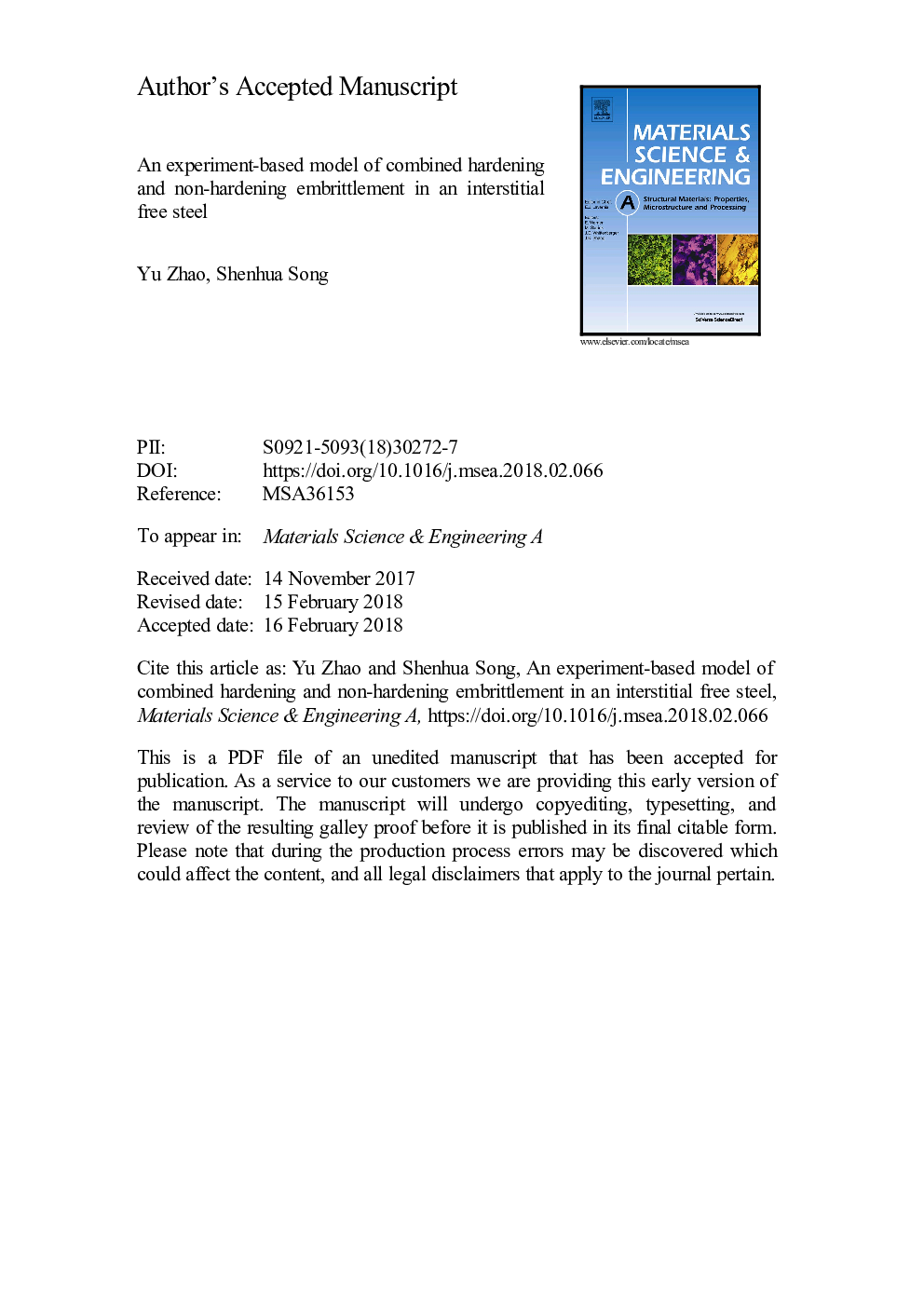| Article ID | Journal | Published Year | Pages | File Type |
|---|---|---|---|---|
| 7972901 | Materials Science and Engineering: A | 2018 | 40 Pages |
Abstract
The fracture appearance transition temperatures (FATTs) are evaluated for the samples of a Nb-stabilized and P-strengthened interstitial free (IF) steel. Based on the measurements, the combined effect of hardening and phosphorus grain boundary segregation on the embrittlement of the steel is investigated. Both hardening and P boundary segregation can raise the FATT of the steel, causing hardening embrittlement and non-hardening embrittlement, respectively. Meanwhile, the grain size influences both kinds of embrittlement, i.e., there is a synergistic effect between grain size and hardening or P boundary segregation on the FATT of the steel. With the aid of the Taylor expansion along with the experimental data, a combined hardening and non-hardening embrittlement equation is established, being expressed as FATTâ¯=â¯2.1Cp +â¯3.48Ïs ââ¯22.36dâ1â2 +â¯0.64(Cp ââ¯14)(dâ1â2 ââ¯3.06)â¯+â¯0.896(Ïs ââ¯14)(dâ1â2 ââ¯3.06)â¯ââ¯13.7, where FATT is the fracture appearance transition temperature in °C, Cp is the phosphorus boundary concentration in at%, Ïs is the yield strength in 10â¯MPa, and d is the grain size in mm. A comparison of the calculated and measured FATTs is made, demonstrating that the calculated FATTs are well consistent with the measured ones.
Related Topics
Physical Sciences and Engineering
Materials Science
Materials Science (General)
Authors
Yu Zhao, Shenhua Song,
